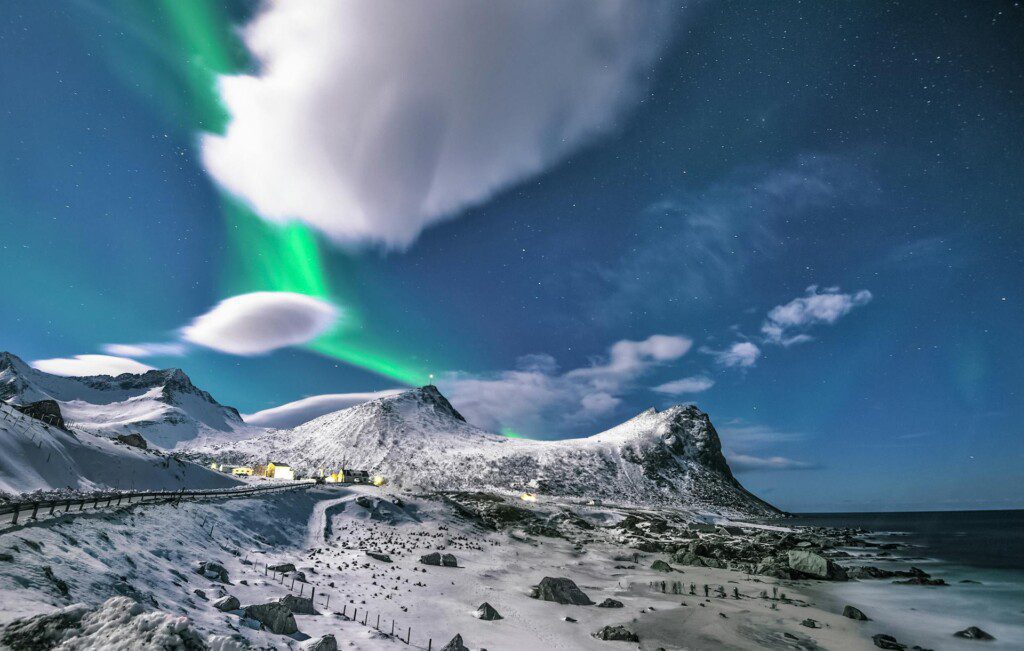Alaska is a land of extremes, where summer nights glow with unending daylight and winter skies shimmer with ribbons of colour. Two of its most iconic natural phenomena the Midnight Sun and the Northern Lights (Aurora Borealis) draw travellers and photographers from all over the world. While you can’t see them both in the same trip, each offers an unforgettable experience in its own right. This guide explores when and where to witness them, plus essential photography tips for DSLR, mirrorless, and smartphone users.
Experience Alaska’s Midnight Sun and Northern Lights with our complete travel and photography guide.
The Midnight Sun in Alaska
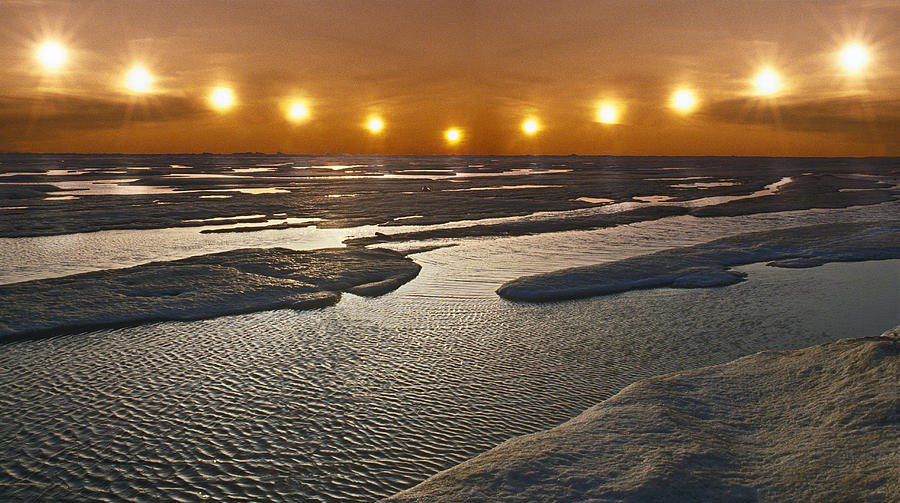
During summer, much of Alaska experiences nearly continuous daylight. The further north you travel, the longer the sun hovers above the horizon.
- Fairbanks enjoys about 70 days of near-constant daylight from mid-May through late July (around 17 May – 27 July).
- Utqiaġvik (formerly Barrow) experiences the longest polar day in the United States: the sun doesn’t set for around 84 days, from about 10 May to 2 August.
This isn’t just a quirk of nature it’s part of Alaskan culture. Fairbanks hosts the Midnight Sun Run, a 10 km race that kicks off at 10 p.m. in June under broad daylight, proving that summer evenings here are anything but ordinary.
The Northern Lights in Alaska
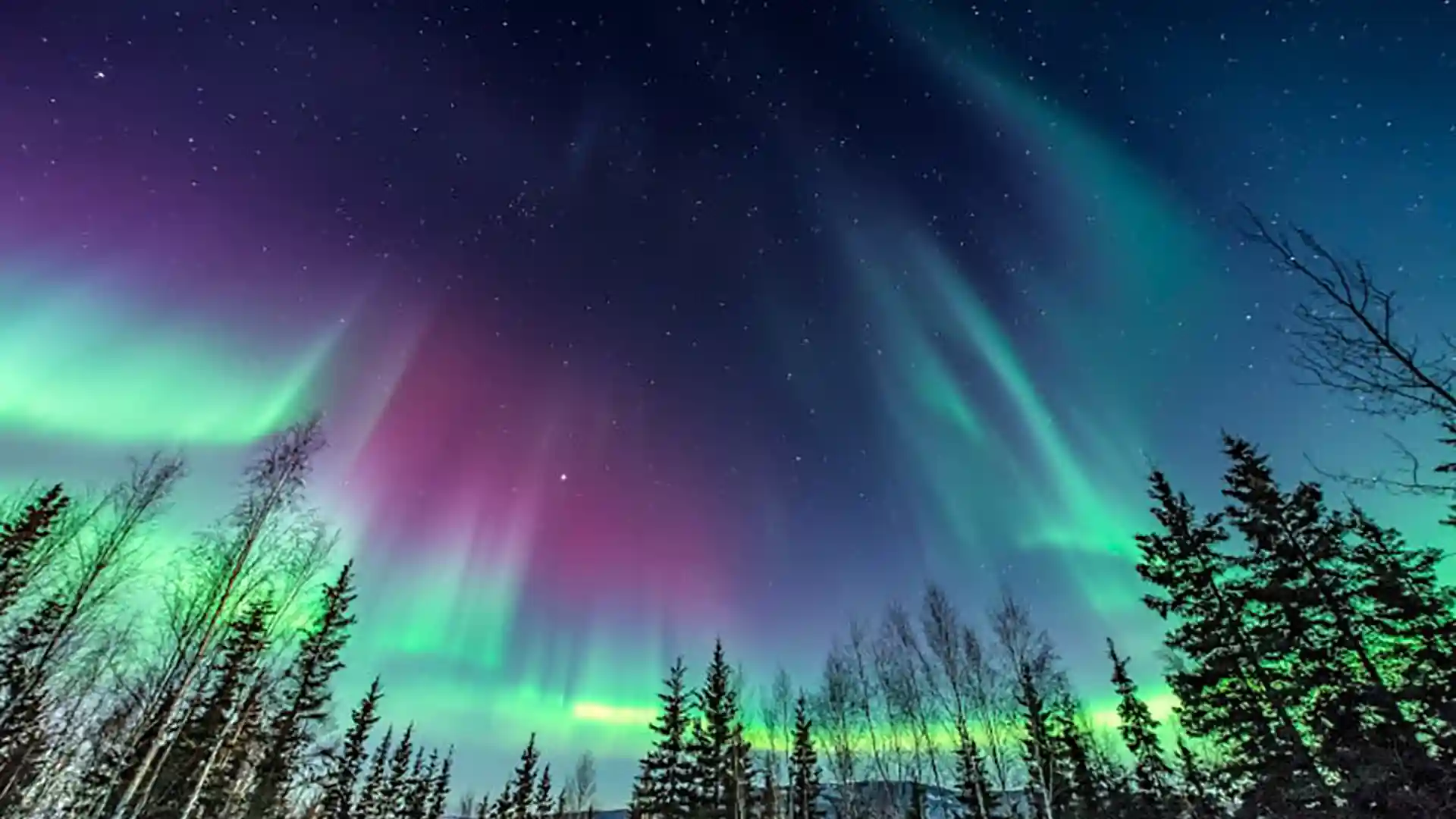
On the other side of the seasonal spectrum, the Aurora Borealis lights up Alaskan skies during the darker months.
- The Aurora Season runs from late August through mid-April, with peak viewing between September and March.
- Best viewing hours: between 10 p.m. and 2 a.m., when skies are darkest.
- Prime months: September, October, February, and March, when auroral activity is strong and nights are long.
Top viewing locations sit beneath the auroral oval, a band of activity encircling the poles. In Alaska, this includes:
- Fairbanks – accessible, clear skies, and plenty of aurora tours (often with “wake-up calls” when the lights appear).
- Denali National Park – pristine wilderness and deep winter darkness, especially spectacular December through February.
- Coldfoot & Wiseman – remote Brooks Range villages with some of the clearest, darkest skies.
- Utqiaġvik, Nome & Kotzebue – far-north and western outposts offering wild tundra landscapes beneath the aurora.
Midnight Sun vs. Northern Lights: Can You See Both?
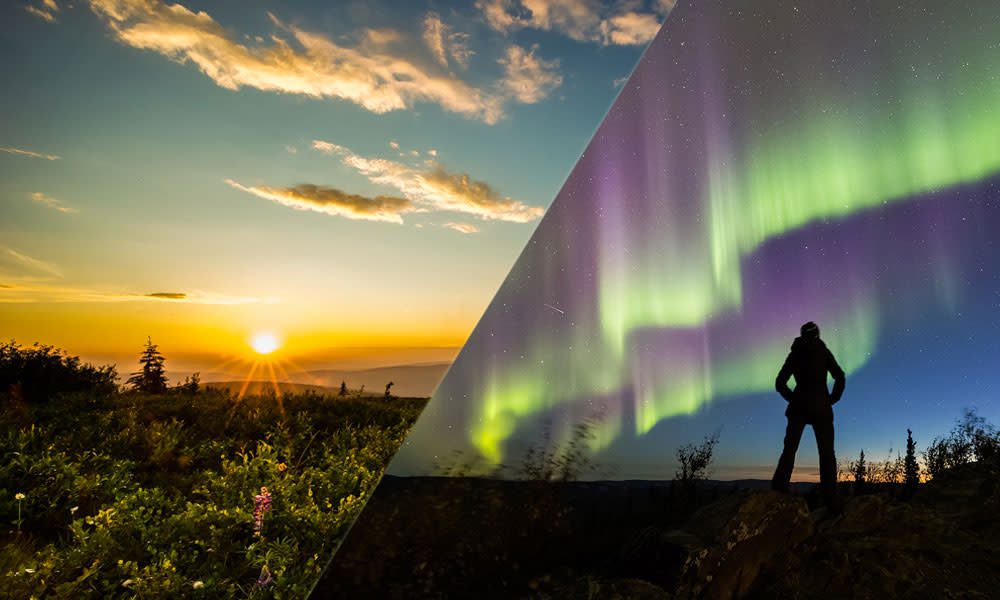
Sadly, no. You can’t see both at the same time.
- Midnight Sun: May – July (continuous daylight, no dark skies).
- Northern Lights: Late August – April (require darkness).
These seasons do not overlap, so you’ll need to choose between endless daylight or celestial night shows.
Planning Tips for Your Alaska Adventure
| Your Goal | Best Travel Window | Recommended Locations & Tips |
| Witness the Midnight Sun | Mid-May to late July | Utqiaġvik for the longest sunlight; Fairbanks for cultural events like the Midnight Sun Run. |
| See the Northern Lights | Late August to mid-April; peak Sept–March | Fairbanks for accessibility; Denali or Coldfoot for darker skies and dramatic scenery. |
Pro Tip: Shoulder seasons (September/October or March/April) often strike a balance strong aurora chances, fewer crowds, and milder weather.
Always check aurora forecasts (e.g., NOAA, University of Alaska Fairbanks) before heading out, and look for clear, dark skies away from city lights.
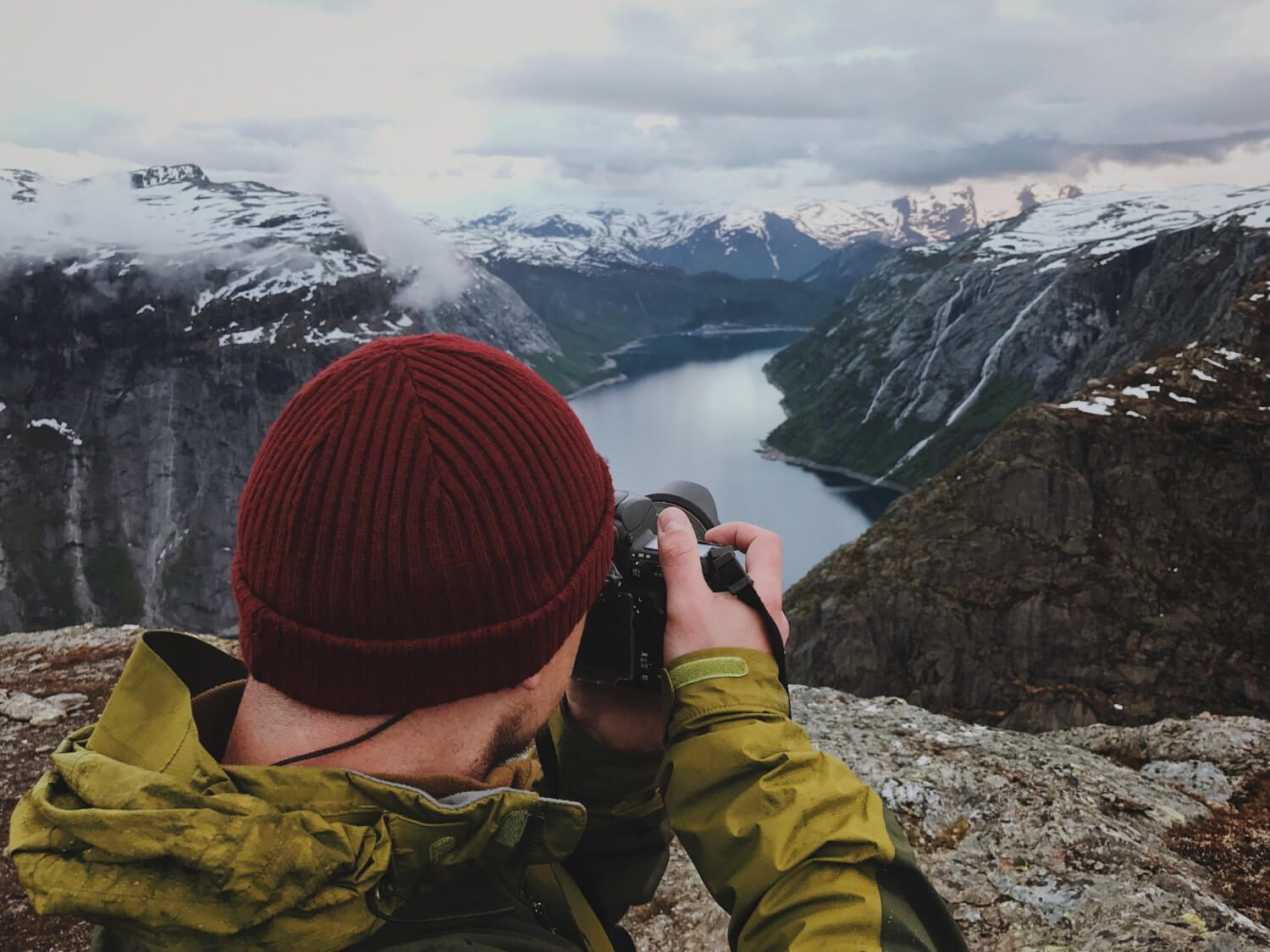
Photography Guide: Capturing Alaska’s Light Shows
Learn the best times, viewing spots, and DSLR & smartphone tips for capturing the magic photos.
For DSLR & Mirrorless Users
- Manual Mode: Take full control of aperture, shutter speed, and ISO.
- Lens Choice: Wide-angle (14–24mm) with fast aperture (f/2.8 or lower) for auroras.
- Aurora Settings: ISO 800–1600, aperture f/2.8, exposure 6–15 seconds.
- Midnight Sun Settings: Smaller aperture (f/9–f/22) to create sharp landscapes and starburst effects in sunlight.
- Tripod & Remote Shutter: Essential for stability and long exposures.
- Manual Focus: Set to infinity, fine-tuned using live view.
- Carry Extras: Spare batteries (the cold drains them quickly) and a red-light headlamp to preserve night vision.
For Smartphone Users
- Use Night Modes: iPhone Night Mode, Pixel Night Sight, or Samsung Expert Raw.
- Stabilise: Mount your phone on a tripod or stable surface.
- Self-Timer: Prevents shake during exposure.
- Landscape Orientation: Capture wide skies.
- Apps for Control: Try NightCap Camera or ProCam X Lite for manual ISO/exposure.
Best Vantage Points Away from Light Pollution
- Fairbanks Region: Cleary Summit, Chena Hot Springs.
- Brooks Range: Coldfoot, Wiseman.
- Denali National Park: Expansive, wild skies in winter.
- Anchorage Area: Hatcher Pass, Knik River, Glen Alps Trailhead.
- Talkeetna: Riverfront and lakes offering reflective foregrounds.
- Denali’s Wonder Lake (for Midnight Sun): Golden reflections and long “magic hours” during summer.
Pro Photography Insights
- Stop down your lens (f/9–f/11) for Midnight Sun landscapes long exposures keep entire scenes sharp.
- Use two devices: one to capture, one to monitor aurora changes without disturbing your main camera.
- Arrive early, set up before the show, and stay patient auroras often appear suddenly.
Final Thoughts
Whether you’re drawn to the surreal Midnight Sun or the mystical Northern Lights, Alaska promises a once-in-a-lifetime experience. Photographers will find both phenomena challenging yet deeply rewarding, with endless opportunities for creativity.
Choose your season, prepare your gear, and embrace the extremes because in Alaska, the sky itself becomes the main event.

